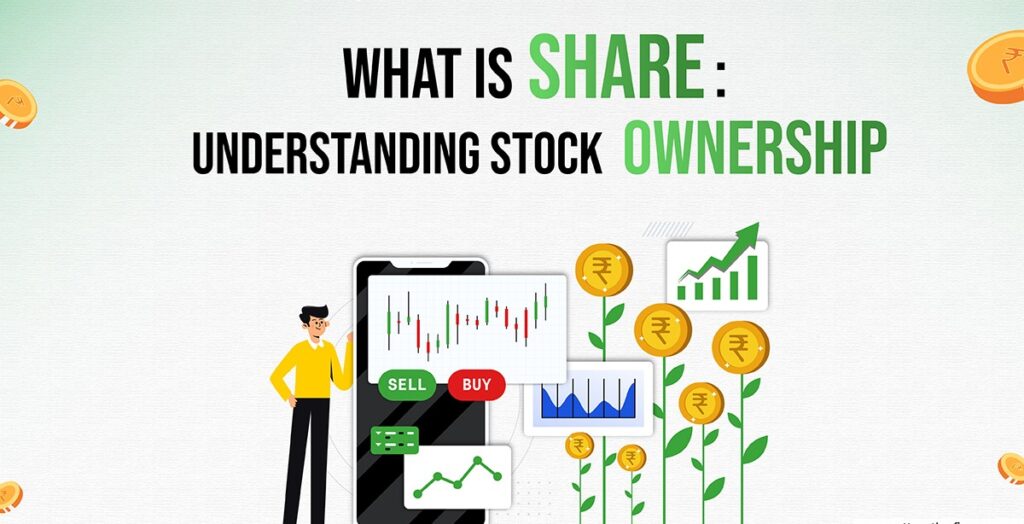Investors are always seeking ways to gain an edge in the fast-moving world of finance. While predicting stock prices with absolute certainty is tricky, advances in AI offer promising tools for analyzing historical data and spotting trends.
In this article, we explore two powerful AI methods for stock price prediction: Long Short-Term Memory (LSTM) networks and Language Models (LMs).
Table of Contents
ToggleUnderstanding Stock Market :

In the world of predicting stock prices using advanced AI techniques, it’s crucial to grasp the fundamental landscape of stock markets. Stock markets act as bustling arenas where investors trade ownership stakes in companies, known as stocks or shares. These markets are not just financial hubs; they’re dynamic ecosystems that reflect the pulse of the economy and investor sentiment.
Here’s a breakdown of key elements shaping stock markets:
Foundation of Ownership: At its core, the stock market embodies the concept of ownership. Investors buy shares of a company, entitling them to a portion of its assets and earnings. This ownership structure forms the foundation of stock market dynamics.
Economic Barometer: Stock markets serve as barometers of economic health. They react to changes in economic indicators like GDP growth, employment rates, and consumer spending. Positive economic news often translates to rising stock prices, while negative indicators may lead to market downturns.
Psychology of Investors: Investor sentiment is a powerful force driving stock market movements. Emotions like fear and greed can lead to market fluctuations, sometimes independent of a company’s actual performance. Understanding investor psychology is key to deciphering market trends.
Global Impact: Stock markets are interconnected on a global scale. Events in one part of the world can have ripple effects across international markets. Geopolitical tensions, trade agreements, and global economic trends all influence stock prices.
Information Flow: Information is the lifeblood of stock markets. Investors rely on a constant stream of news, earnings reports, and analyst forecasts to make decisions. The rapid dissemination of information, facilitated by technology, shapes market reactions.
By understanding these dynamics, investors can better navigate the intricacies of the stock market. Advanced AI techniques offer a new frontier in analyzing and predicting market movements, but they build upon this foundational understanding of how markets operate. In the quest to predict stock prices, it’s essential to appreciate the broader context of stock market dynamics and their interconnectedness with the global economy.
Implementation Using Advanced AI Techniques:

Long Short-Term Memory (LSTM) Networks:
LSTM networks are a type of AI designed for analyzing sequential data. When applied to stock prices, LSTMs look for patterns in past data to predict future price changes.
Implementation Steps:
- Data Collection: Gather historical stock price data from sources like Yahoo Finance.
- Data Preprocessing: Clean up the data to remove noise and standardize it for analysis.
- Model Design: Create an LSTM model based on dataset features.
- Training: Optimize the model parameters using historical data.
- Evaluation: Test the model’s performance on new data.
Language Models (LMs) for Stock Price Prediction:
Language models like GPT can generate text based on learned patterns. By fine-tuning a pre-trained LM with historical stock data, it can forecast future prices.
Implementation Steps:
- Adjusting Pre-trained LM: Fine-tune a pre-trained GPT model with historical data.
- Training Process: Update the model weights to minimize prediction errors.
- Future Price Generation: Use the trained LM to generate future price predictions.
Step-by-step process to build an AI model for stock price forecasting

Let’s say you want to predict the future price of a popular beverage company’s stock, like Coca-Cola. Here’s a simplified step-by-step process:
Gather Historical Data: Collect historical data of Coca-Cola’s stock prices from a reliable financial data source. This data typically includes daily or hourly stock prices over a specified period, along with other relevant information like trading volume and market indices.
Preprocess the Data: Clean the data to remove any inconsistencies or errors. This involves handling missing values, removing outliers, and ensuring uniformity in data format and quality.
Feature Engineering: Identify relevant features that may influence stock prices, such as past price movements, trading volume, market indices (like S&P 500), and possibly external factors like news sentiment or economic indicators.
Split the Data: Divide the historical data into training and testing datasets. The training data is used to train the AI model, while the testing data is used to evaluate its performance.
Choose an AI Model: Select an AI model suitable for time-series forecasting, such as a Long Short-Term Memory (LSTM) network. LSTMs are well-suited for capturing temporal dependencies in sequential data, making them ideal for predicting stock prices.
Train the Model: Feed the training data into the LSTM model and adjust its parameters (like network architecture and learning rate) to minimize prediction errors. The model learns patterns and relationships in the data during this training phase.
Validate the Model: Evaluate the trained model’s performance on the testing dataset to assess its accuracy and generalization capabilities. This helps ensure that the model can make reliable predictions on unseen data.
Fine-tune the Model (Optional): If necessary, fine-tune the model by adjusting its parameters or incorporating additional data to improve its predictive performance further.
Make Predictions: Once validated, the trained model can be used to make predictions on future stock prices. Input relevant features into the model, and it will generate forecasts based on learned patterns from historical data.
Evaluate and Refine: Continuously monitor the model’s predictions against actual stock prices and refine the model as needed. This iterative process helps ensure that the model remains accurate and effective over time.
This step-by-step process outlines a simplified approach to building an AI model for stock price forecasting. Keep in mind that actual implementation may involve additional complexities and considerations, but this provides a basic framework to get started.
In conclusion, the application of advanced AI techniques such as Long Short-Term Memory (LSTM) networks and Language Models (LMs) has opened up new avenues for predicting stock prices with greater accuracy and confidence. By leveraging LSTM networks, investors can analyze sequential data and identify patterns that influence future price changes. Similarly, fine-tuning pre-trained LMs like GPT allows for the generation of future price trajectories based on learned patterns from historical data.
Through this article, we have explored the fundamental landscape of stock markets and how AI techniques build upon this understanding to enhance stock price prediction. By incorporating external data sources, implementing attention mechanisms, and leveraging ensemble methods, investors can further refine their predictive models and unlock new insights into market dynamics.
As technology continues to evolve, AI will play an increasingly crucial role in shaping the future of financial markets. By staying informed about these advancements and embracing innovative approaches, investors can make more informed decisions and navigate the complexities of the stock market with confidence.


1 thought on “Stock Price Prediction Using Advanced AI Techniques”